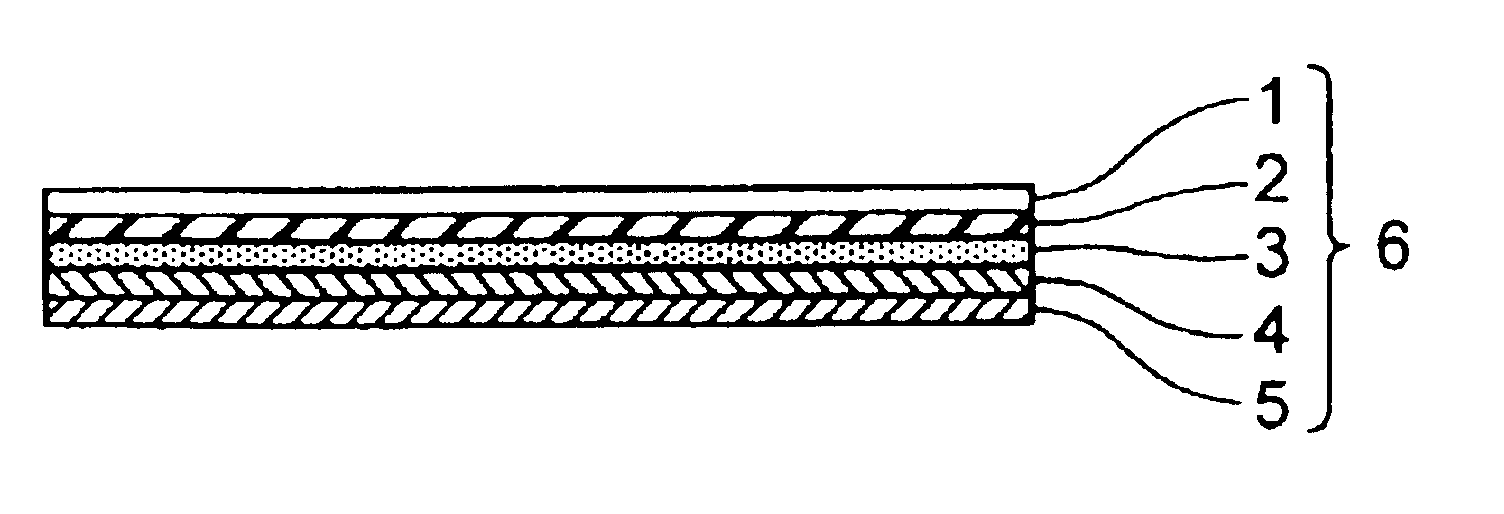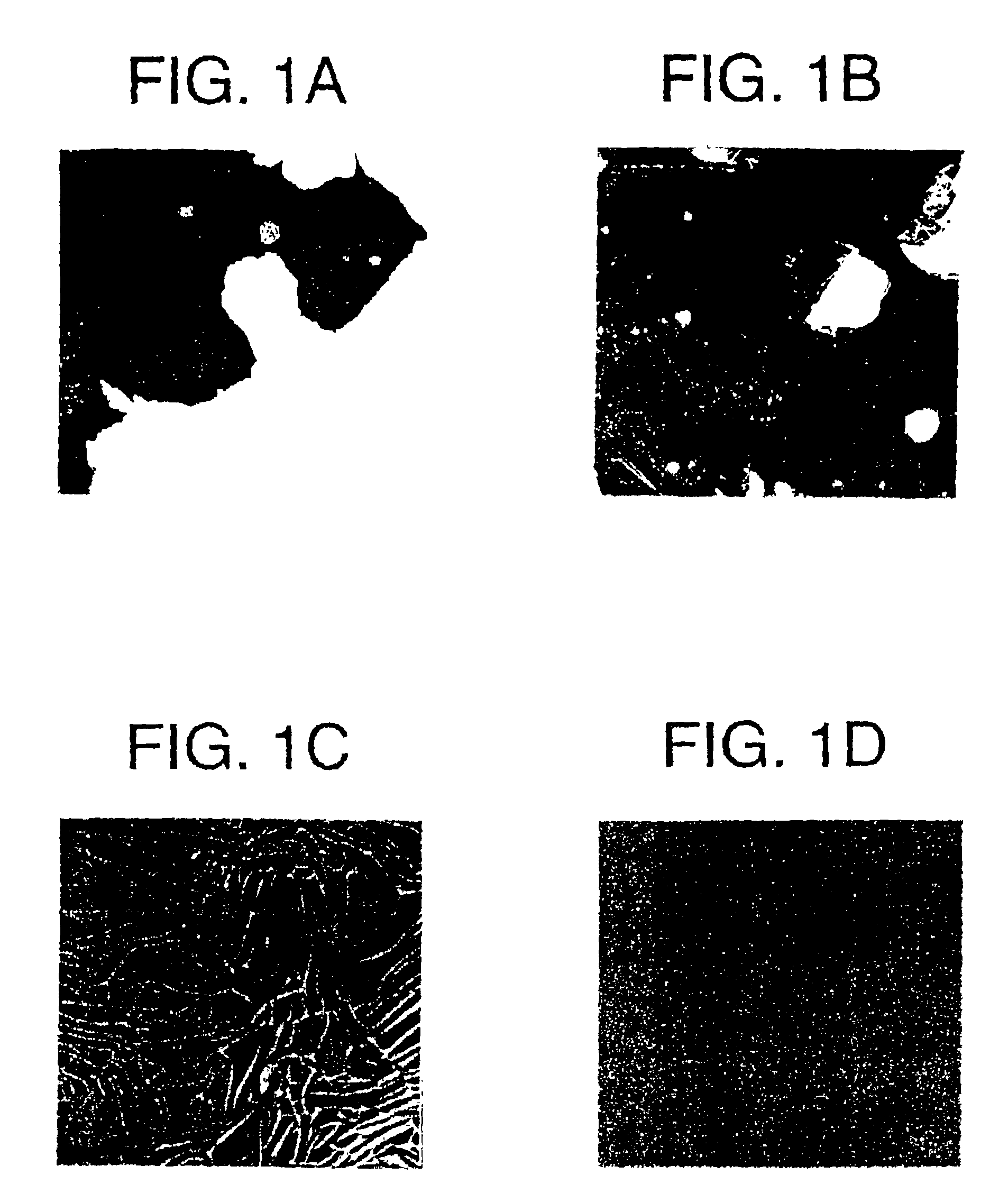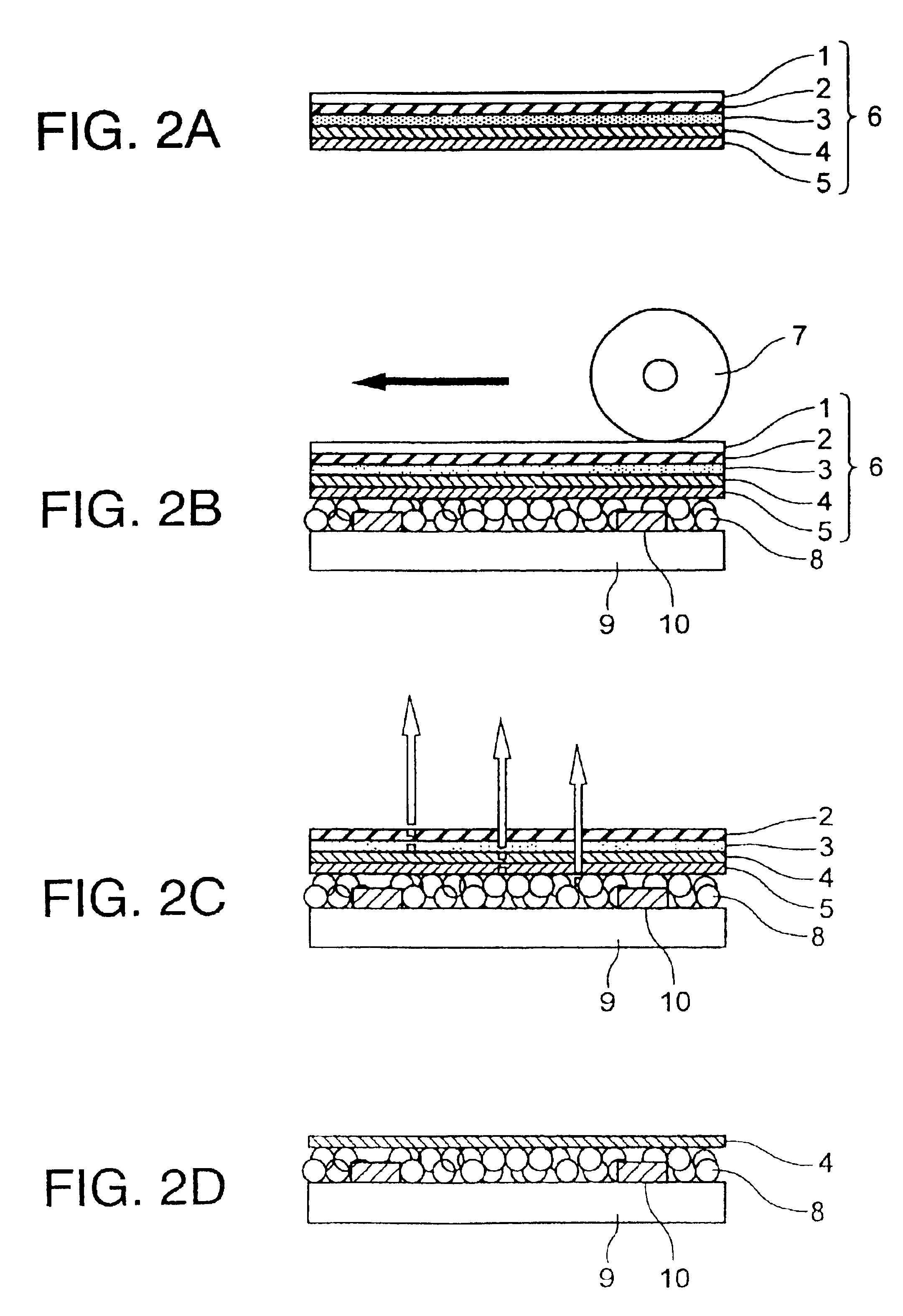Transfer film, method for forming metal back layer, and image display
a metal back layer and transfer film technology, applied in the field of transfer film, can solve the problems of deteriorating the optical reflection performance of the metal back layer, difficult to keep the baking resistance characteristic in good condition, and conventional transfer methods that were difficult to put into actual use, etc., to achieve remarkable withstand voltage characteristics, high metal back effects, and efficient advantageous effects
- Summary
- Abstract
- Description
- Claims
- Application Information
AI Technical Summary
Benefits of technology
Problems solved by technology
Method used
Image
Examples
embodiment 1
A transfer film was produced by the following procedure. A parting agent consisting of 75 parts of toluene, 12 parts of methyl isobutyl ketone, 12 parts of methyl ethyl ketone, 0.2 part of acetylene glycol, 0.2 part of waxes, 0.2 part of cellulose acetate, 0.2 part of a rosin-based resin and 0.2 part of a silicone resin was applied to a base film made of a polyester resin having a thickness of 20 μm by a gravure coater and dried to form a parting-agent layer having a thickness of 0.5 μm.
Then, a resin composition consisting of 25 parts of methyl isobutyl ketone, 25 parts of methyl ethyl ketone, 6 parts of denatured alcohol, 10 parts of toluene, 10 parts of butyl acetate, 10 parts of ethyl acetate, 5 parts of a melamine resin, 5 parts of a urea resin, 1 part of cellulose derivative, 1 part of a rosin-based resin, 1 part of dimethylsiloxane, 0.5 part of phosphoric acid and 0.5 part of p-toluenesulfonic acid was applied to the parting-agent layer by the gravure coater and dried to form ...
embodiment 2
First, a transfer film was produced according to the following procedure. A parting agent consisting of 75 parts of toluene, 12 parts of methyl isobutyl ketone, 12 parts of methyl ethyl ketone, 0.2 part of acetylene glycol and 0.2 part of a silicone resin was applied to a base film made of a polyester resin having a thickness of 20 μm by a gravure coater and dried to form a parting-agent layer having a thickness of 0.5 μm. Then, a resin composition consisting of 25 parts of methyl isobutyl ketone, 25 parts of methyl ethyl ketone, 6 parts of denatured alcohol, 10 parts of toluene, 10 parts of butyl acetate, 10 parts of ethyl acetate, 5 parts of a melamine resin, 5 parts of a urea resin, 1 part of a cellulose derivative, 1 part of a rosin-based resin, 1 part of dimethylsiloxane, 0.5 part of phosphoric acid, 0.5 part of p-toluenesulfonic acid and 2 parts of N-butyl benzene sulfonamide was applied to the parting-agent layer by the gravure coater and dried to form a protective film havin...
embodiment 3
In the same way as in Embodiment 2, a transfer film was produced except that the aluminum film had a thickness of 50 nm.
Then, a stripe-pattern light shielding layer made of a black pigment was formed on one side of a face plate for a 10-inch FED by a screen printing method. A phosphor layer having three colors red (R), green (G) and blue (B) was formed between the light shielding section and the light shielding section of the light shielding layer by the screen printing method in such a way that the respective colors were adjacent to one another in the form of a stripe.
Then, a transfer film was disposed so to have its adhesive-agent layer come into contact with the phosphor layer, pressed by a rubber roller having hardness of 50 degrees and a surface temperature of 200° C. at a velocity of 2 m / min. and a pressing force of 300 kg / cm2. And the base film was peeled at a velocity of 10 m / min., to form an aluminum film on the phosphor layer of the face plate. Then, the face plate was rai...
PUM
| Property | Measurement | Unit |
|---|---|---|
| thickness | aaaaa | aaaaa |
| resistance | aaaaa | aaaaa |
| resistance | aaaaa | aaaaa |
Abstract
Description
Claims
Application Information
 Login to View More
Login to View More - R&D
- Intellectual Property
- Life Sciences
- Materials
- Tech Scout
- Unparalleled Data Quality
- Higher Quality Content
- 60% Fewer Hallucinations
Browse by: Latest US Patents, China's latest patents, Technical Efficacy Thesaurus, Application Domain, Technology Topic, Popular Technical Reports.
© 2025 PatSnap. All rights reserved.Legal|Privacy policy|Modern Slavery Act Transparency Statement|Sitemap|About US| Contact US: help@patsnap.com



